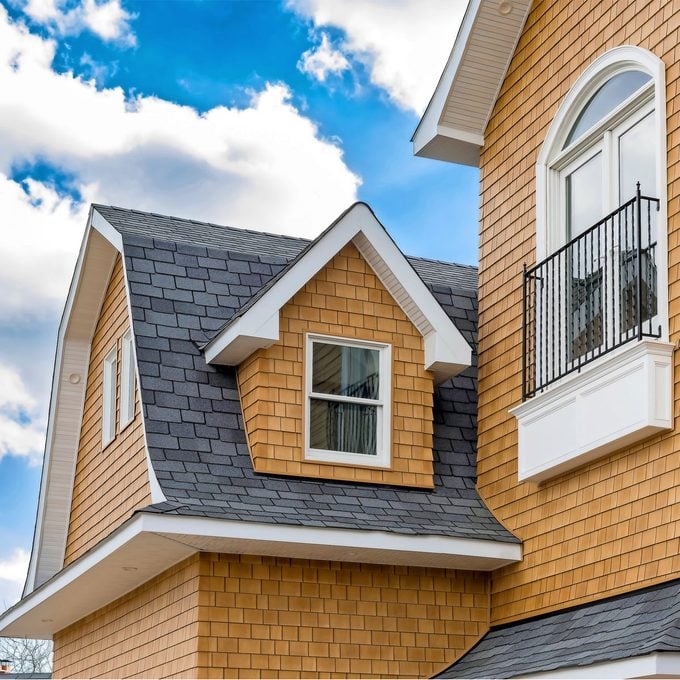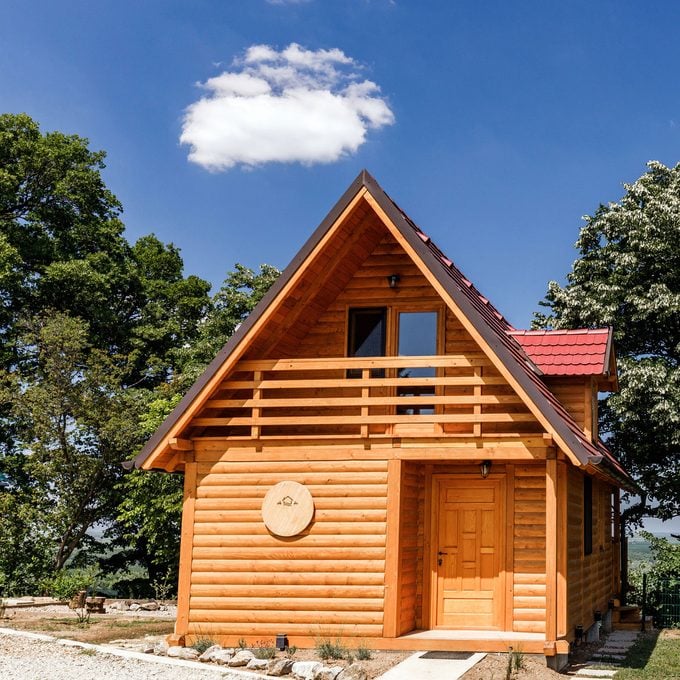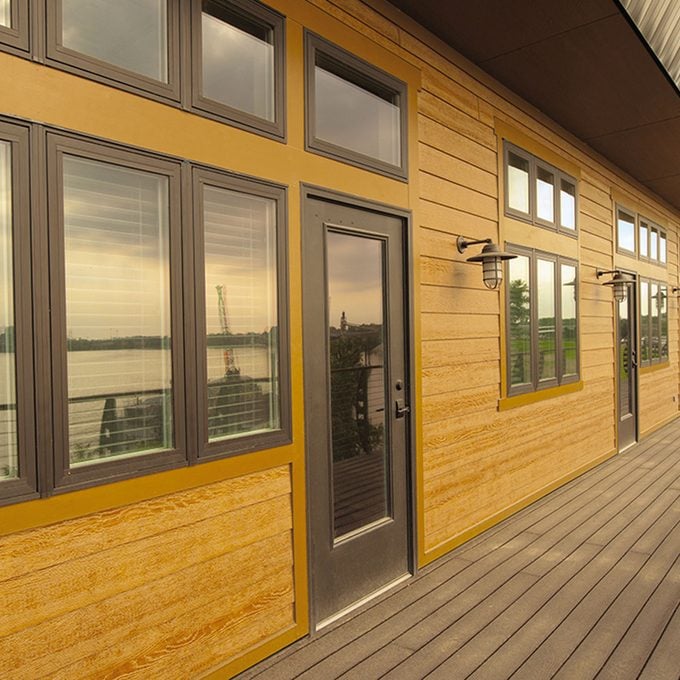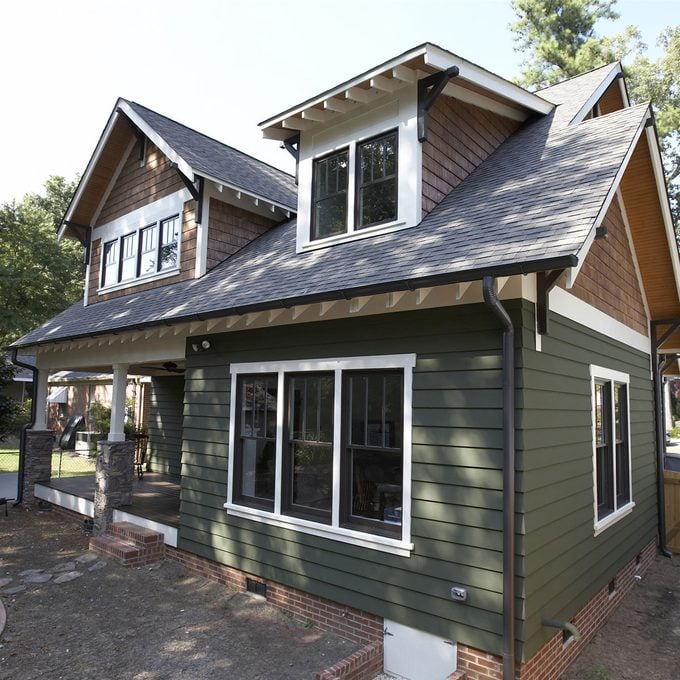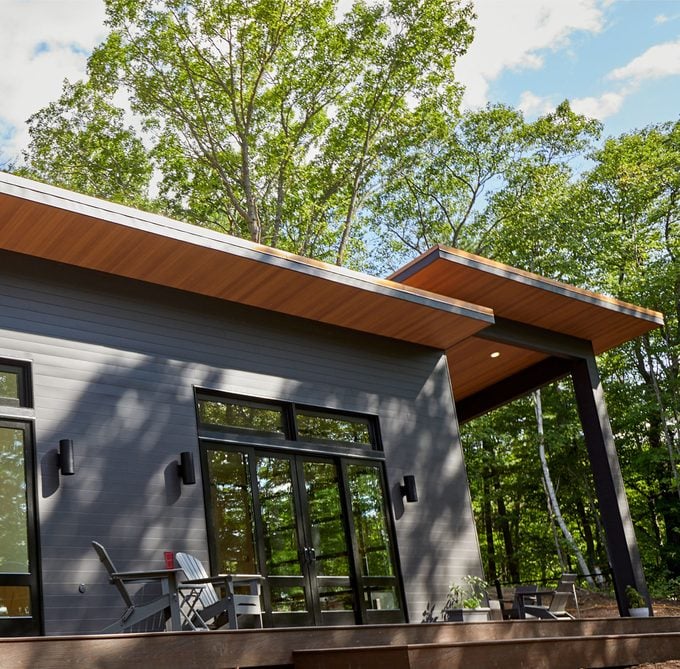Choose well, and the siding on your vacation home will give the appearance you desire, provide worry-free performance and last for years.
How to Choose the Best Siding for Your Cabin
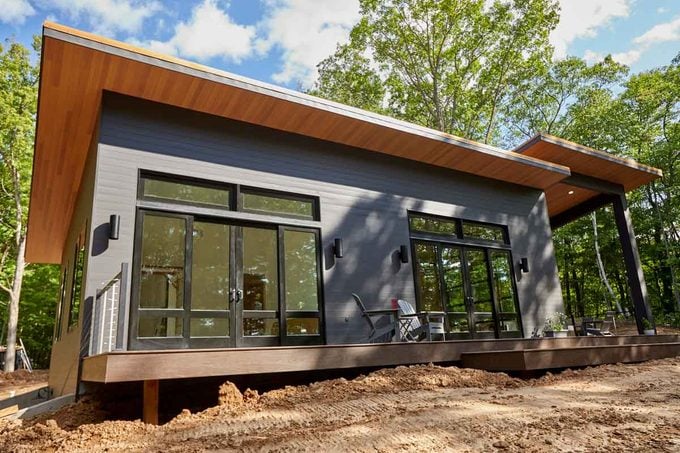
On This Page
Choosing Siding: A Defining Moment
When you choose siding for your second home, don’t rush or assume one type is best. It’s an expensive investment that can run up to tens of thousands of dollars, depending on the material and its installation cost.
The siding you choose should meet your needs and priorities, not just in appearance and cost, but also performance and maintenance. Choose well, and your vacation home will blend with its surroundings, maintain its architectural integrity and be protected from all that nature throws its way.
Vinyl
Vinyl siding, hands down, is the most popular and affordable siding available. You can find attractive options that go beyond the bland-looking vinyl plank that covers so many suburban homes.
You may pay more for the vinyl beach house shakes in the image above, but it’s still far less expensive than the real wood alternative and requires little maintenance by comparison. Plus, installation can be cheap and easy. With the proper install, vinyl can protect your home from all kinds of weather yet still allow your walls to breathe, warding off mold, mildew and rot.
A downside? Vinyl installations components like J channel around windows, exterior trim and other transitions can detract from the style and architecture of a home.
Wood
Many homeowners pine for wood siding. For a true restoration or distinctive look, it can be a perfect option. Today’s finishes are far superior to those from a decade ago, helping wood siding last.
You won’t have the same low maintenance of other manufactured sidings. But when installed with the latest techniques and finishes, there will be far less upkeep than the cabins of yesteryear. The “D” log siding shown here is a great way to go if you want that log cabin look without the expense of log construction. Don’t forget to check out these different types of wood siding.
Engineered Wood
Engineered wood siding is made from a combination of wood fibers and exterior-grade resins. It first appeared in the 1960s and now is a go-to for many builders.
This product has improved in recent years. A long list of product options includes panel siding, sidewall shakes, lap siding, soffit material and exterior trim boards. Most manufacturers offer high-quality factory finishes in lots of colors. Installation is similar to wood siding, but the cost per square foot is less.
Fiber-cement
Made from a mixture of cement, sand and cellulose fibers, fiber cement is cured using pressurized steam. It’s a good option for those who want the look of wood without the hassles and costs of maintenance.
It caught on fast in the early 1990s because of its affordability, though installation issues led to some some legal problems for big-time builders. Those woes have been largely cleared up, and the quality and number of fiber cement products are ever-increasing.
It takes more time and attention to put up fiber-cement to meet warranty specifications, but it’s worth it because the material is impervious.
Metal
For our recent Getaway project, we chose a Vesta Steel Plank System made by Quality Edge. Steel siding is gaining popularity, mostly vertical corrugated panels. We favored the look and design of this steel lap-siding product that can be installed vertically or horizontally.
This modern steel adaptation of traditional wood shiplap had a permanence we couldn’t find with other products. The materials cost more, but its install — similar to vinyl — went quickly, so we saved on labor. Many of the components are the same profile and install in the same manner.
For the wooded setting of our Getaway cabin, we got what we wanted with this choice of siding: modern style, durability and low maintenance. Although a modern house, it still had an organic look that fit with the woods around it.




















